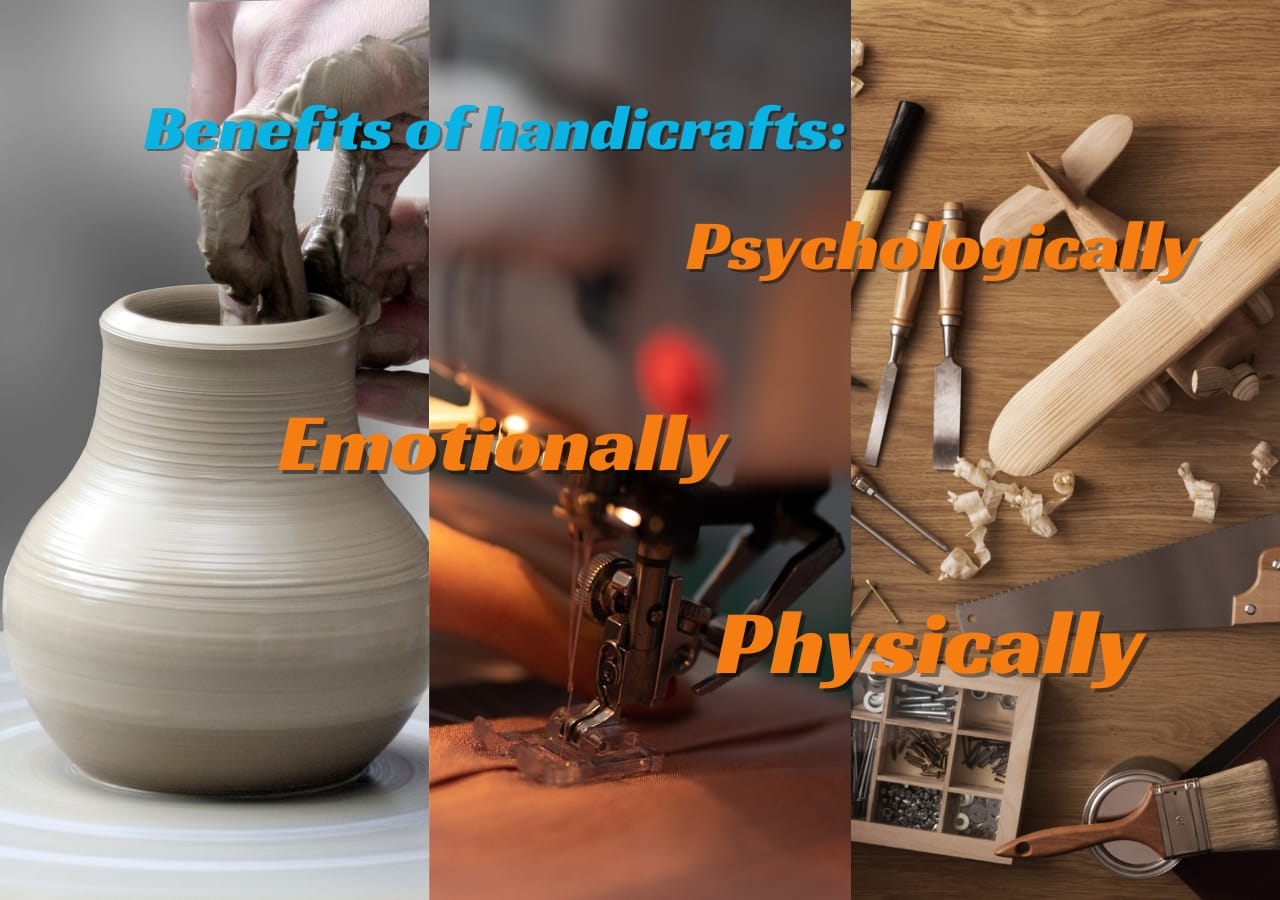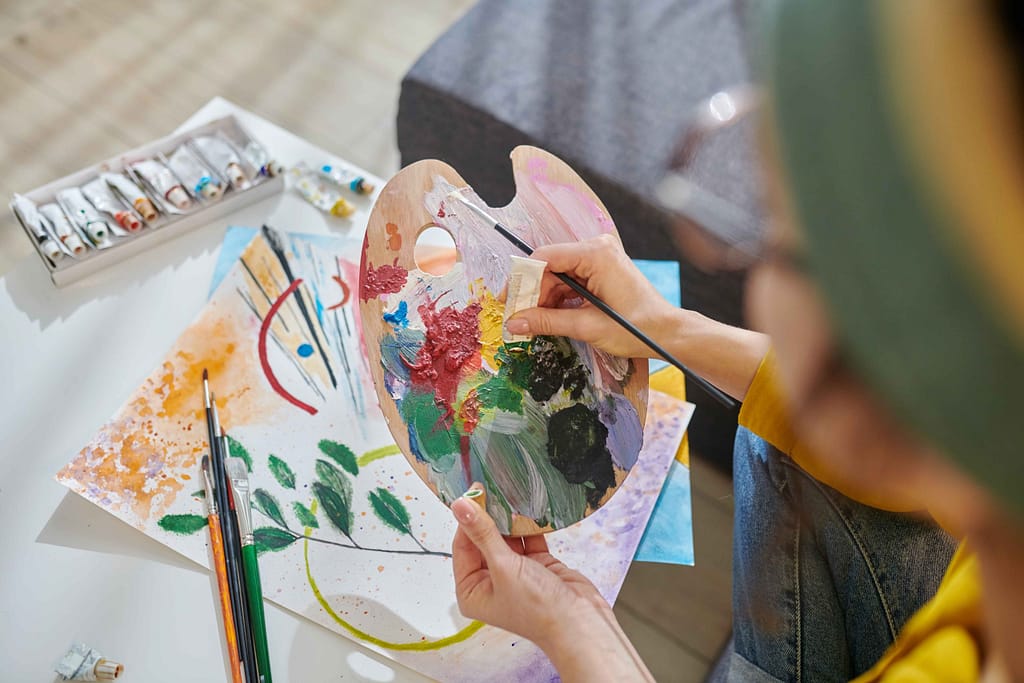Handcrafting for Mindfulness: How Creating Can Enhance Your Well-Being

Handcrafting is more than just creating something with our hands; it is a mindful practice that encourages us to be present in the moment and engaged with the task at hand.
Whether it involves activities like knitting, pottery, or painting, handcrafting allows us to immerse ourselves in a flow state, helping to shift our focus away from daily stressors and worries.
This creative engagement can serve as a therapeutic escape, providing a much-needed respite from the chaos of modern life.
Moreover, the connection between creating and mental health is particularly significant, as numerous studies have shown that artistic expression can effectively reduce anxiety, improve mood, and boost overall well-being.
For instance, engaging in these creative activities can trigger the release of endorphins, the body’s natural feel-good chemicals, which contribute to a more positive outlook.
By consciously dedicating time to handcrafting, we not only nurture our creative side but also foster a deeper sense of mindfulness and presence in our lives. This practice can transform our perception of time, enabling us to savor each moment and cultivate a greater appreciation for the simple joys of creation.
Engaging in handcrafting is not just about the final product; it is a holistic journey that benefits both our mental health and our creativity.
- To deepen your understanding of how basic handcrafting techniques can contribute to mindfulness and well-being, visit “Master the Basics: 9 Essential Handcrafting Techniques for Beginners and Inspiring Projects to Get You Started.”
Table of Contents
1. Understanding Mindfulness
Mindfulness is the practice of being fully present in the moment, and aware of our thoughts, feelings, and surroundings without judgment. Its origins can be traced back to ancient Buddhist meditation practices, where it was used to cultivate awareness and promote a deeper understanding of the self.
Today, mindfulness has gained popularity in various contexts, including psychology and wellness, as a valuable tool for enhancing mental health and emotional regulation.
Practicing mindfulness in daily life offers numerous benefits. It can reduce stress by encouraging us to focus on the present rather than worrying about the past or future. This heightened awareness helps improve our emotional resilience, allowing us to respond to challenging situations more clearly and calmly.
Additionally, mindfulness enhances concentration and cognitive flexibility, making it easier to navigate day-to-day tasks. Incorporating mindfulness into our routines can lead to improved relationships, as it fosters empathy and active listening, ultimately helping us connect more deeply with others.
Ultimately, the practice of mindfulness serves as a foundation for better overall well-being, making it an essential component of a fulfilling life.
2. The Benefits of Handcrafting
Handcrafting can be a powerful form of meditation, allowing individuals to enter a state of focused attention and awareness. When we engage in creative activities, our minds can shift from wandering to a singular focus on the task at hand.
This flow state not only provides a soothing escape from everyday stress but also fosters an internal calmness similar to traditional meditation. By concentrating on repetitive motions like stitching or molding, we create a rhythm that helps quiet the mind, making it easier to disconnect from anxiety and distractions.
Beyond its meditative qualities, handcrafting offers a range of physical, emotional, and psychological benefits.
Physically, the act of creating can improve fine motor skills and enhance hand-eye coordination.
Emotionally, participating in crafts can produce feelings of accomplishment and satisfaction as we bring our ideas to life. This creative expression often serves as a healthy outlet for emotions, allowing us to process feelings and experiences constructively.
Psychologically, engaging in handcrafting can boost self-esteem and confidence, leading to a more positive self-image as we see tangible results of our efforts.
Overall, the multifaceted benefits of handcrafting underscore its significance not only as a hobby but as a meaningful practice for enhancing our overall well-being.
3. Types of Handcrafting





Handcrafting encompasses a variety of activities that allow individuals to express their creativity and engage their minds. Some popular forms include knitting, pottery, painting, woodworking, and sewing.
Each of these crafts offers a unique experience and set of benefits.
Knitting: is a rhythmic activity that requires repetition, making it particularly effective for entering a mindful state. The calming motions of creating stitches can help to focus the mind and reduce anxiety.
Pottery: on the other hand, involves tactile engagement with materials like clay. The process of shaping and molding clay can be meditative, encouraging individuals to connect with their senses and the present moment.
Painting: allows for free expression and can be very therapeutic. The act of applying color can release emotions and thoughts that may otherwise remain unexpressed, fostering a sense of peace.
Woodworking: involves careful attention to detail and precision, promoting mindfulness through the focus required to create functional art.
Sewing: not only helps improve fine motor skills but also encourages participants to engage with their projects thoughtfully, fostering a sense of accomplishment as they see their creations come to life.
Overall, each of these handcrafting activities offers a pathway to mindfulness, allowing individuals to slow down, breathe, and embrace creativity in a meaningful way.
4. Getting Started with Handcrafting
Starting your handcrafting journey can be exciting and fulfilling. For beginners, it’s essential to choose a craft that feels inviting and manageable.
Here are some tips to help you get started:
- Explore Your Interests: Think about what forms of creativity you find appealing. Do you like textiles, painting, or working with wood? Selecting a craft that resonates with you will enhance your engagement and enjoyment.
- Start with Simple Projects: Begin with beginner-friendly projects that are not overly complicated. For instance, try knitting a simple scarf, creating a small clay dish, or painting a basic landscape. These projects will help build your skills without overwhelming you.
- Utilize Online Resources: There are countless online tutorials available on platforms like YouTube, Pinterest, or dedicated crafting websites. These resources can guide you step-by-step through your chosen craft and inspire new ideas.
- Join Local Classes or Workshops: Look for local crafting classes at community centers, craft stores, or art schools. Participating in these sessions can help you learn new techniques and connect with other crafting enthusiasts.
- Invest in Basic Tools and Materials: Before diving in, gather some essential tools and materials for your chosen craft. Don’t feel pressured to buy the most expensive supplies; beginners can often get started with affordable items.
By following these tips, you’ll be well on your way to discovering the joys of handcrafting.
Remember, the key is to enjoy the process, embrace creativity, and allow yourself the freedom to learn and grow along the way.
5. Integrating Handcrafting into Daily Life
Incorporating handcrafting into a busy schedule can seem challenging, but with a few simple strategies, you can easily weave creativity into your daily routine.
Here are some practical ways to make crafting a regular part of your life:
- Set Aside Specific Time: Dedicate a small block of time each week for crafting. Whether it’s 30 minutes after dinner or a few hours on the weekend, having a set time can help establish a routine and make crafting a priority.
- Carry Your Crafting Supplies: Keep a portable crafting kit that you can take with you. This way, you can work on simple projects during your commute, lunch breaks, or while waiting for appointments.
- Mini Projects: Opt for smaller, manageable projects that can be completed in short time frames. This allows you to engage in crafting without feeling overwhelmed, making it easier to fit into your day.
- Combine Activities: Pair crafting with other activities, such as watching a movie or listening to a podcast. This can enhance your enjoyment while ensuring you carve out time for creativity.
- Make it Social: Invite friends or family to join you in your crafting sessions. It can be a delightful way to bond while also fostering a creative atmosphere.
Conclusion
In a world overflowing with distractions, handcrafting offers a serene sanctuary for the mind and soul.
Engaging in creative activities not only fosters a sense of accomplishment but also promotes mindfulness, allowing us to reconnect with ourselves and the present moment.
The simple act of creating can transform stress into tranquility, making it an essential practice for enhancing overall well-being. So, why not pick up that knitting needle or paintbrush today?
Share your thoughts and experiences in the comments below—let’s inspire each other on this journey of creativity and mindfulness!




